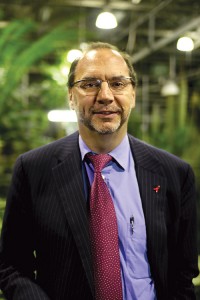 Peter Piot was newly qualified to work in a microbiology lab in the Belgium city of Antwerp at 27 years of age when he was given human blood in a flask. The blood had been contaminated with an unknown pathogen that was killing people in Zaire’s forests.
Peter Piot was newly qualified to work in a microbiology lab in the Belgium city of Antwerp at 27 years of age when he was given human blood in a flask. The blood had been contaminated with an unknown pathogen that was killing people in Zaire’s forests.
He did not know that inside the flask was an infectious disease that is one of the most lethal now today to humans. That was in 1976 when he and his colleagues became co-discoverers of the disease Ebola.
The Belgian scientist at that time traveled to Zaire, which is now Congo, to work amongst the missionaries and villagers dying in the rainforests to get more samples and investigate the ongoing epidemic.
Health authorities in Guinea on Monday said that there is currently an outbreak, the first known to take place in west Africa.
The World Health Organization, based in Geneva, said Tuesday that Guinea reported as many as 86 cases and 59 deaths.
Six cases suspected of being Ebola, including 5 deaths, in Liberia, which neighbors Guinea, are also being investigated, said a WHO official.
Piot is frustrated and saddened that this is happening partly because it should be prevented easily or at least contained. He is also frustrated because the detective work by scientists behind the virus had not revealed its main host.
The pattern is repeated; starting with those living in the forest or that have a close contact with it; then it is transmitted in hospitals; and then is spread further either at households or funerals that have close contact.
Initially the virus causes a very high fever, muscle pain, headaches and then conjunctivitis, before severe phases that included diarrhea, vomiting, external and internal bleeding. Of those that become infected about 90% die.
No treatment and no vaccine exist for the virus, but Piot says it can be contained.
